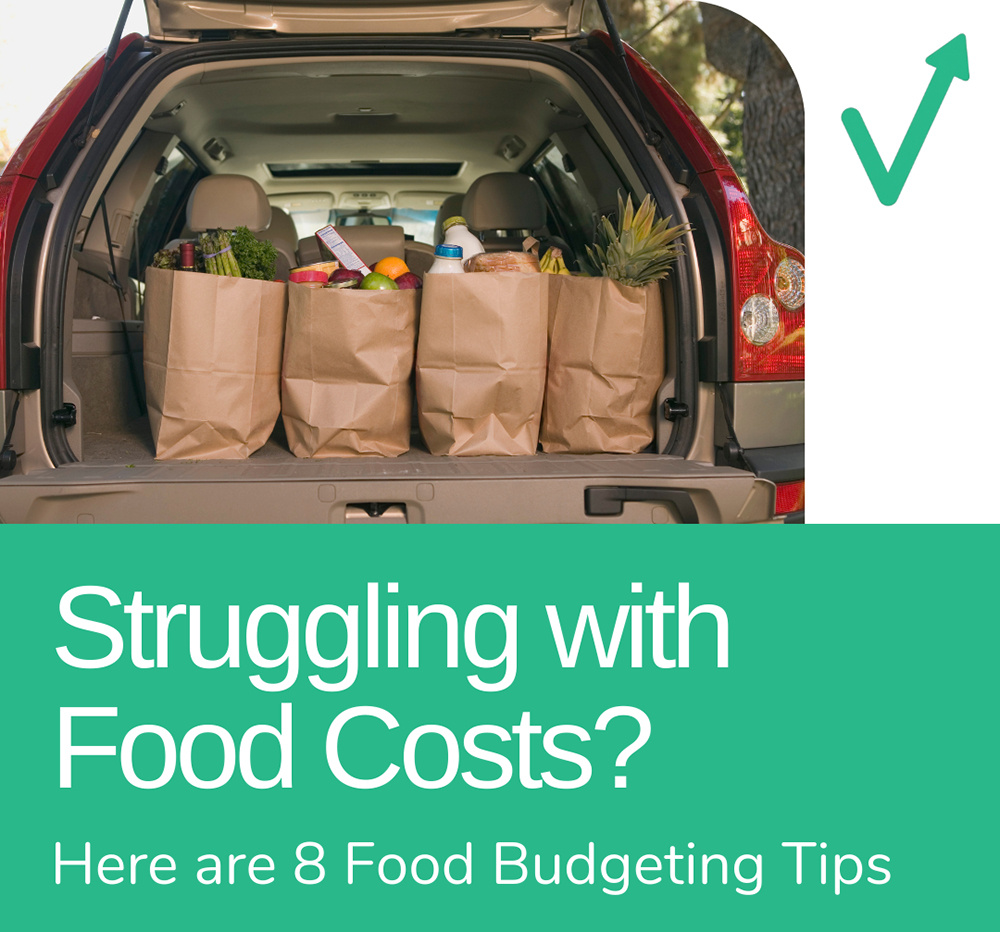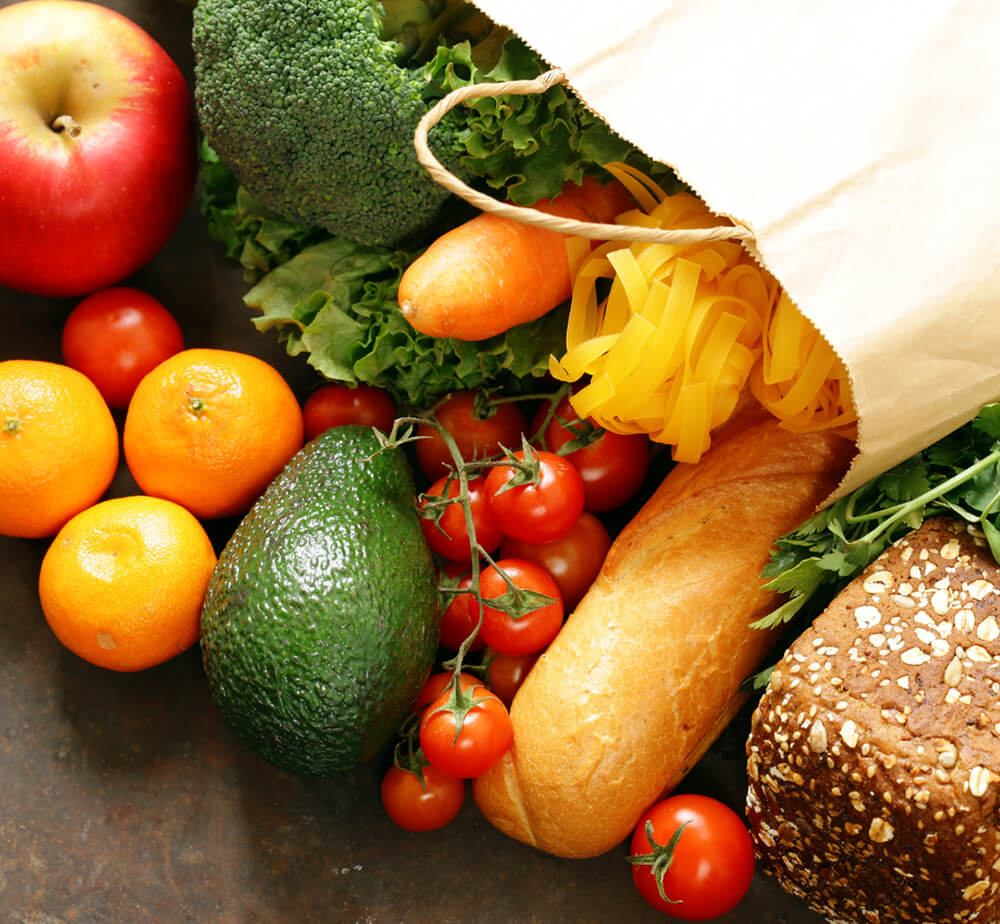
Struggling with Food Costs? Here are 8 Food Budgeting Tips
Food is one of life’s necessities. Yet, food costs seem to keep going up and up.
Between inflation driving prices higher and supply chain issues causing shortages, it can feel like your grocery bill is out of control. As food takes up a larger chunk of your paycheck, you may be wondering how to trim costs.
The good news is there are ways to get your food spending under control, even with rising prices. Smart food budgeting takes some effort but pays off in the long run.
Follow these seven tips to stretch your food dollars further each month. With a bit of planning and discipline, you can eat well without breaking the bank.
#1 Understanding your current food expenses
Before diving into ways to reduce your food spending, it helps to know exactly where your money is going. Track your food purchases for a month to identify patterns and problem areas.
Use an app to log every food item you buy or eat out. Manually recording purchases also works. Be sure to note:
- The item purchased
- The category it falls under (produce, protein, snacks, household items, etc.)
- The amount spent
This food spending audit will reveal where you overspend so you can target specific changes. Are coffee shops a budget buster? Is too much going to pre-made foods instead of ingredients? The data guides your efforts.
Once you know the current costs for food, look at how it fits into your overall budget. What percent goes to food each month? Is it in line with the recommended guidelines of 10-15% of income? If food takes 20% or more of your earnings, reducing this frees up money for other goals.
Understanding food costs and patterns paves the way for spending smarter. Now, let’s get into budget-friendly approaches for getting meals on the table.
Key Takeaway: Track your food purchases and assess their impact on your overall budget to identify areas of overspending.
#2 Planning meals in advance
Planning is power when it comes to food savings. Decide what you’ll eat for the week or month ahead of time to enable better choices at the grocery store. You’ll buy only what you need versus grabbing random items that may go to waste. A meal plan guides you in creating tasty, budget meals instead of pricey takeout on busy nights.
Make meal planning fast and easy with these tips.
- Pick meals around what’s on sale. Check weekly flyers for deals on particular ingredients. Plan recipes around sale items.
- Use a meal planning app. Choose or build meals from recipes in handy apps that auto-generate a grocery list.
- Cook extra. Double recipes or add extra servings and freeze for future meals.
- Involve the family. Have everyone suggest their favorite budget-friendly dinners to add to the plan.
Aside from savings, meal planning eases weeknight chaos. You’ll always know what’s for dinner and have ingredients ready to go. No more scrambling last minute or costly takeout because nothing’s thawed or on hand.
Key Takeaway: Meal planning saves time and money. Use apps or simple strategies to create a plan that works for your family.
#3 Shopping Smart
Armed with your meal plan, you’re ready to shop! Use these savvy shopping strategies to get the most from your grocery budget.
- Make a list. Check off items as you go so you don’t stray from what you actually need.
- Compare prices. Check the unit price, not just the total cost, to find real deals. Off-brand is often cheaper.
- Buy in bulk. For shelf-stable items, bulk bins and large packages offer lower per-ounce costs.
- Consider store brands. They have the same quality at significant discounts from national brands.
- Look up and down. Prices on higher and lower shelves are typically better than at eye level.
- Buy in season. Fresh seasonal produce is cheaper and tastes better.
- Shop alone. It’s easier to stick to your list without distractions from kids asking for extras.
A bit of planning ensures you get everything on your list at the best possible price. But saving money on groceries doesn’t end at checkout. The way you handle and prepare food at home also affects your budget.
Key Takeaway: Shop with a list and be strategic about where and when you buy to maximize savings.
#4 Reducing food waste
The average family throws away 25% of the food purchased, wasting money and resources. Cutting down on spoilage means more of your food dollars go toward actual meals. Implement these food waste tips:
- Understand date labels. “Sell by” and “best before” indicate quality, not safety. Most foods keep past those dates.
- Store food properly. Keep fridge at 40°F. Freeze meat/produce if you won’t use it quickly.
- Eat leftovers. Designate leftovers at night or reinvent them in creative dishes.
- Use parts people don’t. Beet greens, carrot tops, and chicken bones flavour stocks.
- Compost. Turn food scraps into nutritious compost for garden beds.
Planning meals, storing ingredients correctly, and repurposing leftovers take a little extra time. But it ensures you get the most value from the food you buy.
Key Takeaway: Minimize food waste by understanding date labels, proper storage, and utilizing all parts of ingredients.
#5 Eating out less
Dining in restaurants costs a lot compared to homemade meals. The average restaurant dish costs 3-4 times more than cooking it yourself. Just eliminating one takeout meal per week saves around $50 monthly.
Cutting back on dining out takes some strategy:
- Enjoy occasionally. Make dining out a treat instead of a daily habit.
- Split portions. Share meals or take leftovers since most portions are oversized.
- Drink water. Skip pricey sodas, juices, and alcohol.
- Use coupons. Check sites for restaurant deals to save on meals.
- Find cheaper options. Opt for family restaurants over fine dining when eating out.
- Cook copycat meals. Recreate your favorite restaurant dishes affordably at home.
With a little creativity, you can still enjoy dining out while sticking to your food budget. The real savings come from replacing most restaurant meals with home cooking.
Key Takeaway: Eating out less saves money. Use strategies to cut back on restaurant expenses while still enjoying an occasional treat.
#6 Growing your own food
For the ultimate in cheap, fresh produce, grow your own! Gardening does require an initial investment and ongoing effort, but the savings can be substantial. Vegetables and herbs are pricey from the store but keep producing when homegrown.
Starting a food garden takes some planning:
- Choose suitable crops for your climate.
- Find a sunny spot or create raised beds.
- Determine watering options if there is no garden rain access.
- Buy supplies – seeds, plants, fertilizer, tools.
- Prepare soil – till, remove weeds, and mix in compost.
- Plant seeds or seedlings at the right time for your region.
- Water and weed consistently so plants thrive.
- Harvest once crops are mature.
Even beginners can feasibly grow tomatoes, greens, root vegetables, beans, and herbs. Growing your own produce provides free access to the freshest possible food.
Key Takeaway: Starting a food garden provides access to fresh produce at minimal cost. Do research and put in some effort for ultimate savings.
#7 Utilizing community resources
Beyond home efforts, look into community resources that offer food savings.
- Food banks – Nonprofit organizations provide free grocery items and meals to low-income families. Use food finder apps to locate nearby options.
- Community gardens – Rent a garden plot to grow food or volunteer in exchange for produce. A fun way to expand gardening.
- Co-ops – Become a member and pay a fee to receive discounted bulk goods and produce. Great for staple items.
- CSA programs – Join a community-supported agriculture farm for weekly boxes of seasonal produce.
Don’t let pride keep you from utilizing programs that ease food costs for many. Everyone deserves access to affordable, nutritious food.
Key Takeaway: Community food resources are available for anyone in need. Take advantage of these programs to stretch your budget and access fresh, healthy foods at lower costs.
Final thoughts
Rising food costs don’t need to blow up your budget. With strategic meal planning, smart shopping, reducing waste, gardening, and using community resources, you can take control of your food spending. Try out these tips to make your grocery dollars go further. A few simple changes add up to big savings over time – savings that can be directed to other financial goals. Get started today on trimming your food budget wherever possible. Your wallet and your taste buds will thank you!
Moreover, there’s a helpful resource that can provide an added boost as you master your food budget: Level. With competitive rates and an easy online application process, a personal loan from Level can be a strategic step towards financial flexibility. Whether you need additional funds for grocery shopping, starting your home garden, or supporting community food programs, Level is here to assist.








Sorry, the comment form is closed at this time.